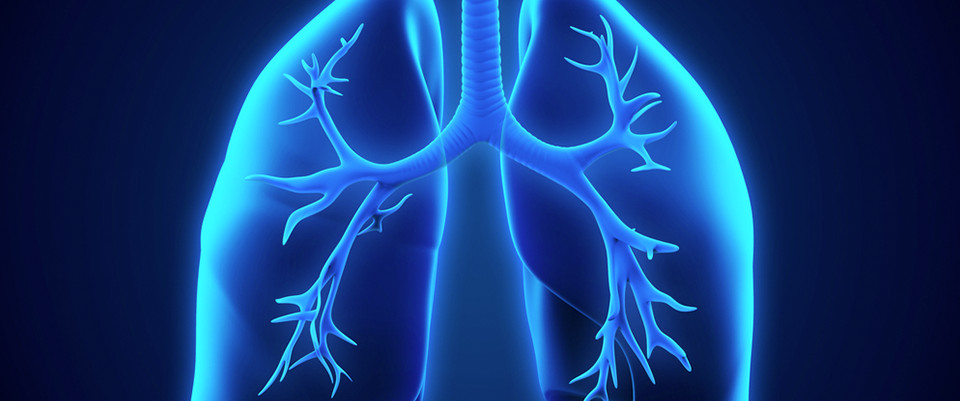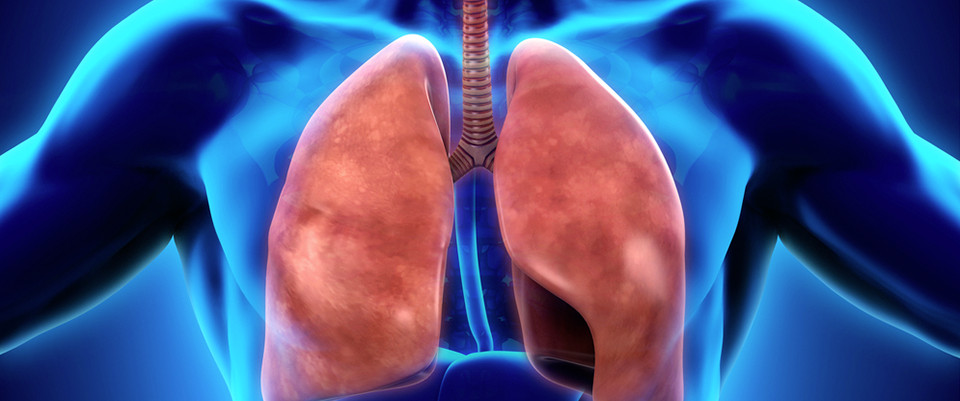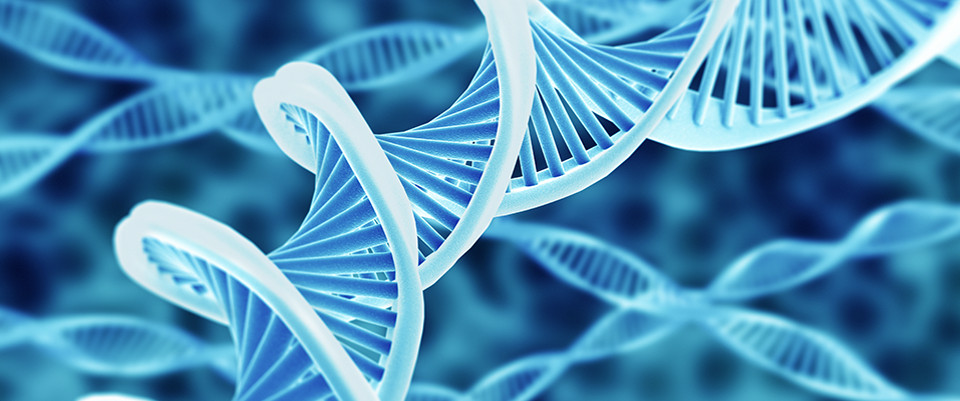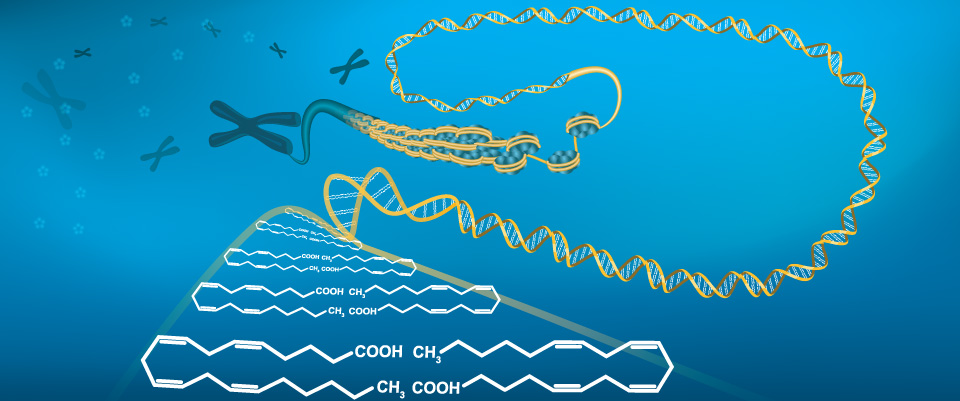PubMed
Discovery of nutritional biomarkers: future directions based on omics technologies.
Discovery of nutritional biomarkers: future directions based on omics technologies.
Int J Food Sci Nutr. 2015 Jul;66(S1):S31-S40
Authors: Odriozola L, Corrales FJ
Abstract
Understanding the interactions between food and human biology is of utmost importance to facilitate the development of more efficient nutritional interventions that might improve our wellness status and future health outcomes by reducing risk factors for non-transmittable chronic diseases, such as cardiovascular diseases, cancer, obesity and metabolic syndrome. Dissection of the molecular mechanisms that mediate the physiological effects of diets and bioactive compounds is one of the main goals of current nutritional investigation and the food industry as might lead to the discovery of novel biomarkers. It is widely recognized that the availability of robust nutritional biomarkers represents a bottleneck that delays the innovation process of the food industry. In this regard, omics sciences have opened up new avenues of research and opportunities in nutrition. Advances in mass spectrometry, nuclear magnetic resonance, next generation sequencing and microarray technologies allow massive genome, gene expression, proteomic and metabolomic profiling, obtaining a global and in-depth analysis of physiological/pathological scenarios. For this reason, omics platforms are most suitable for the discovery and characterization of novel nutritional markers that will define the nutritional status of both individuals and populations in the near future, and to identify the nutritional bioactive compounds responsible for the health outcomes.
PMID: 26241009 [PubMed - as supplied by publisher]
Nutridynamics: mechanism(s) of action of bioactive compounds and their effects.
Nutridynamics: mechanism(s) of action of bioactive compounds and their effects.
Int J Food Sci Nutr. 2015 Jul;66(S1):S22-S30
Authors: Serrano JC, Jove M, Gonzalo H, Pamplona R, Portero-Otin M
Abstract
Mechanism of action of bioactive compounds may be multiple, especially in the food matrix. Therefore, the interplay between these compounds and hosts' physiology, and the consequences of its continuous intake should be considered. In analogy with pharmacodynamics, the bioactive compounds should have both defined targets and mechanisms of action. However, several essential differences arise when considering the heterogeneous nature of the food matrix, the multiplicity of mechanisms and the variety of responses. In order to ascertain a potential mechanism of activity, one should consider both the intended use of the food, the biomarker that will support this claim and previous evidences, examined from current information sources. Once these have been examined, several experimental strategies should be considered, ranging from the choice of preclinical or experimental model, the use of samples from pilot interventional studies and the application of system's biology derived techniques, such as transcriptomics or metabolomics.
PMID: 26241008 [PubMed - as supplied by publisher]
An essential poison: Synthesis and degradation of cyclic di-AMP in Bacillus subtilis.
An essential poison: Synthesis and degradation of cyclic di-AMP in Bacillus subtilis.
J Bacteriol. 2015 Aug 3;
Authors: Gundlach J, Mehne FM, Herzberg C, Kampf J, Valerius O, Kaever V, Stülke J
Abstract
Gram-positive bacteria synthesize the second messenger cyclic di-AMP to control cell wall and potassium homeostasis and to secure the integrity of their DNA. In the firmicutes, c-di-AMP is essential for growth. The model organism Bacillus subtilis encodes three diadenylate cyclases and two potential phosphodiesterases to produce and degrade c-di-AMP, respectively. Among the three cyclases, CdaA is conserved in nearly all firmicutes, and this enzyme seems to be responsible for the c-di-AMP that is required for cell wall homeostasis. Here, we demonstrate that CdaA localizes to the membrane and that it forms a complex with the regulatory protein CdaR and the glucosamine-6-phosphate mutase GlmM. Interestingly, cdaA, cdaR, and glmM form a gene cluster that is conserved throughout the firmicutes. This conserved arrangement and the observed interaction between the three proteins suggests a functional relation. Our data suggest that GlmM and GlmS are involved in the control of c-di-AMP synthesis. These enzymes convert glutamine and fructose-6-phosphate to glutamate and glucosamine-1-phosphate. c-di-AMP synthesis is enhanced if the cells are grown in the presence of glutamate as compared to glutamine-grown cells. Thus, the quality of the nitrogen source is an important signal for c-di-AMP production. In the analysis of c-di-AMP-degrading phosphodiesterases, we observed that both phosphodiesterases, GdpP and PgpH (previously YqfF), contribute to the degradation of the second messenger. Accumulation of c-di-AMP in a gdpP pgpH double mutant is toxic for the cells, and the cells respond to this accumulation by inactivation of the diadenylate cyclase CdaA.
IMPORTANCE: Bacteria use second messengers for signal transduction. Cyclic di-AMP is the only second messenger that is essential for a large group of bacteria known so far. We have studied the regulation of c-di-AMP synthesis and the role of the phosphodiesterases that degrade the second messenger. C-di-AMP synthesis strongly depends on the nitrogen source: glutamate-grown cell produce more c-di-AMP than glutamine-grown cells. The accumulation of c-di-AMP in a strain lacking both phosphodiesterases is toxic, and results in inactivation of the diadenylate cyclase CdaA. Our results suggest that CdaA is the critical diadenylate cyclase that produces the c-di-AMP that is both essential and toxic upon accumulation.
PMID: 26240071 [PubMed - as supplied by publisher]
Pharmacological inhibition of fatty acid oxidation synergistically enhances the effect of L-asparaginase in childhood ALL cells.
Pharmacological inhibition of fatty acid oxidation synergistically enhances the effect of L-asparaginase in childhood ALL cells.
Leukemia. 2015 Aug 4;
Authors: Heřmanová I, Arruabarrena-Aristorena A, Vališ K, Nůsková H, Jorda MA, Fišer K, Fernández-Ruiz S, Kavan D, Pecinová A, Niso-Santano M, Žaliová M, Novák P, Houštěk J, Mráček T, Kroemer G, Carracedo A, Trka J, Starková J
Abstract
L-asparaginase (ASNase), a key component in the treatment of childhood acute lymphoblastic leukemia (ALL), hydrolyzes plasma asparagine and glutamine and thereby disturbs metabolic homeostasis of leukemic cells. The efficacy of such therapeutic strategy will depend on the capacity of cancer cells to adapt to the metabolic challenge, which could relate to the activation of compensatory metabolic routes. Therefore, we studied the impact of ASNase on the main metabolic pathways in leukemic cells. Treating leukemic cells with ASNase increased fatty acid oxidation (FAO) and cell respiration and inhibited glycolysis. FAO, together with the decrease in protein translation and pyrimidine synthesis, was positively regulated through inhibition of the RagB-mTORC1 pathway, whereas the effect on glycolysis was RagB-mTORC1 independent. Since FAO has been suggested to have a pro-survival function in leukemic cells, we tested its contribution to cell survival following ASNase treatment. Pharmacological inhibition of FAO significantly increased the sensitivity of ALL cells to ASNase. Moreover, constitutive activation of the mTOR pathway increased apoptosis in leukemic cells treated with ASNase, but did not increase FAO. Our study uncovers a novel therapeutic option based on the combination of ASNase and FAO inhibitors.Leukemia accepted article preview online, 04 August 2015. doi:10.1038/leu.2015.213.
PMID: 26239197 [PubMed - as supplied by publisher]
Vitroprocines, new antibiotics against Acinetobacter baumannii, discovered from marine Vibrio sp. QWI-06 using mass-spectrometry-based metabolomics approach.
Vitroprocines, new antibiotics against Acinetobacter baumannii, discovered from marine Vibrio sp. QWI-06 using mass-spectrometry-based metabolomics approach.
Sci Rep. 2015;5:12856
Authors: Liaw CC, Chen PC, Shih CJ, Tseng SP, Lai YM, Hsu CH, Dorrestein PC, Yang YL
Abstract
A robust and convenient research strategy integrating state-of-the-art analytical techniques is needed to efficiently discover novel compounds from marine microbial resources. In this study, we identified a series of amino-polyketide derivatives, vitroprocines A-J, from the marine bacterium Vibrio sp. QWI-06 by an integrated approach using imaging mass spectroscopy and molecular networking, as well as conventional bioactivity-guided fractionation and isolation. The structure-activity relationship of vitroprocines against Acinetobacter baumannii is proposed. In addition, feeding experiments with (13)C-labeled precursors indicated that a pyridoxal 5'-phosphate-dependent mechanism is involved in the biosynthesis of vitroprocines. Elucidation of amino-polyketide derivatives from a species of marine bacteria for the first time demonstrates the potential of this integrated metabolomics approach to uncover marine bacterial biodiversity.
PMID: 26238555 [PubMed - as supplied by publisher]
Alteration of Amino Acid and Biogenic Amine Metabolism in Hepatobiliary Cancers: Findings from a Prospective Cohort Study.
Alteration of Amino Acid and Biogenic Amine Metabolism in Hepatobiliary Cancers: Findings from a Prospective Cohort Study.
Int J Cancer. 2015 Aug 3;
Authors: Stepien M, Duarte-Salles T, Fedirko V, Floegel A, Barupal DK, Rinaldi S, Achaintre D, Assi N, Tjønneland A, Overvad K, Bastide N, Boutron-Ruault MC, Severi G, Kühn T, Kaaks R, Aleksandrova K, Boeing H, Trichopoulou A, Bamia C, Lagiou P, Saieva C, Agnoli C, Panico S, Tumino R, Naccarati A, Bueno-de-Mesquita HB, Peeters PH, Weiderpass E, Quirós JR, Agudo A, Sánchez MJ, Dorronsoro M, Gavrila D, Barricarte A, Ohlsson B, Sjöberg K, Werner M, Sund M, Wareham N, Khaw KT, Travis RC, Schmidt JA, Gunter M, Cross A, Vineis P, Romieu I, Scalbert A, Jenab M
Abstract
Perturbations in levels of amino acids (AA) and their derivatives are observed in hepatocellular carcinoma (HCC). Yet, it is unclear whether these alterations precede or are a consequence of the disease, nor whether they pertain to anatomically related cancers of the intrahepatic bile duct (IHBC), and gallbladder and extrahepatic biliary tract (GBTC). Circulating standard AA, biogenic amines and hexoses were measured (Biocrates AbsoluteIDQ-p180Kit) in a case-control study nested within a large prospective cohort (147 HCC, 43 IHBC and 134 GBTC cases). Liver function and hepatitis status biomarkers were determined separately. Multivariable conditional logistic regression was used to calculate odds ratios and 95% confidence intervals (OR; 95%CI) for log-transformed standardised (mean=0, SD=1) serum metabolite levels and relevant ratios in relation to HCC, IHBC or GBTC risk. Fourteen metabolites were significantly associated with HCC risk, of which 7 metabolites and 4 ratios were the strongest predictors in continuous models. Leucine, lysine, glutamine and the ratio of branched chain to aromatic AA (Fischer's ratio) were inversely, while phenylalanine, tyrosine and their ratio, glutamate, glutamate/glutamine ratio, kynurenine and its ratio to tryptophan were positively associated with HCC risk. Confounding by hepatitis status and liver enzyme levels was observed. For the other cancers no significant associations were observed. In conclusion, imbalances of specific AA and biogenic amines may be involved in HCC development. This article is protected by copyright. All rights reserved.
PMID: 26238458 [PubMed - as supplied by publisher]
Roseomics: a blank slate.
Related Articles
Roseomics: a blank slate.
Curr Opin Virol. 2014 Dec;9:188-93
Authors: Moorman NJ, Murphy EA
Abstract
Recent technological advances have led to an explosion in the system-wide profiling of biological processes in the study of herpesvirus biology, herein referred to as '-omics'. In many cases these approaches have revealed novel virus-induced changes to host cell biology that can be targeted with new antiviral therapeutics. Despite these successes, -omics approaches are not widely applied in the study of roseoloviruses. Here we describe examples of how -omics studies have shaped our understanding of herpesvirus biology, and discuss how these approaches might be used to identify host and viral factors that mediate roseolovirus pathogenesis.
PMID: 25437230 [PubMed - indexed for MEDLINE]
An in planta-expressed polyketide synthase produces (R)-mellein in the wheat pathogen Parastagonospora nodorum.
Related Articles
An in planta-expressed polyketide synthase produces (R)-mellein in the wheat pathogen Parastagonospora nodorum.
Appl Environ Microbiol. 2015 Jan;81(1):177-86
Authors: Chooi YH, Krill C, Barrow RA, Chen S, Trengove R, Oliver RP, Solomon PS
Abstract
Parastagonospora nodorum is a pathogen of wheat that affects yields globally. Previous transcriptional analysis identified a partially reducing polyketide synthase (PR-PKS) gene, SNOG_00477 (SN477), in P. nodorum that is highly upregulated during infection of wheat leaves. Disruption of the corresponding SN477 gene resulted in the loss of production of two compounds, which we identified as (R)-mellein and (R)-O-methylmellein. Using a Saccharomyces cerevisiae yeast heterologous expression system, we successfully demonstrated that SN477 is the only enzyme required for the production of (R)-mellein. This is the first identification of a fungal PKS that is responsible for the synthesis of (R)-mellein. The P. nodorum ΔSN477 mutant did not show any significant difference from the wild-type strain in its virulence against wheat. However, (R)-mellein at 200 μg/ml inhibited the germination of wheat (Triticum aestivum) and barrel medic (Medicago truncatula) seeds. Comparative sequence analysis identified the presence of mellein synthase (MLNS) homologues in several Dothideomycetes and two sodariomycete genera. Phylogenetic analysis suggests that the MLNSs in fungi and bacteria evolved convergently from fungal and bacterial 6-methylsalicylic acid synthases.
PMID: 25326302 [PubMed - indexed for MEDLINE]
Rapid on-line analysis of single cyanobacteria and algae cells under nitrogen-limited conditions using aerosol time-of-flight mass spectrometry.
Rapid on-line analysis of single cyanobacteria and algae cells under nitrogen-limited conditions using aerosol time-of-flight mass spectrometry.
Anal Chem. 2015 Aug 3;
Authors: Cahill JF, Darlington TK, Fitzgerald CK, Schoepp NG, Beld J, Burkart MD, Prather KA
Abstract
Metabolomics studies typically perform measurements on populations of whole cells which provide the average representation of a collection of many cells. However key mechanistic information can be lost using this approach. Investigating chemistry at the single cell level yields a more accurate representation of the diversity of populations within a cell sample, however this approach has many analytical challenges. In this study, an aerosol time-of-flight mass spectrometer (ATOFMS) was used for rapid analysis of single algae and cyanobacteria cells with diameters ranging from 1-8 µm. Cells were aerosolized by nebulization and directly transmitted into the ATOFMS. Whole cells were determined to remain intact inside the instrument through a combination of particle sizing and imaging measurements. Differences in cell populations were observed after perturbing Chlamydomonas reinhardtii cells via nitrogen deprivation. Thousands of single cells were measured over a period of 4 days for nitrogen-replete and nitrogen-limited conditions. A comparison of the single cell mass spectra of the cells sampled under the two conditions revealed an increase in the dipalmitic acid sulfolipid sulfoquinovosyldiacylglycerol (SQDG), a chloroplast membrane lipid, under nitrogen-limited conditions. Single cell peak intensity distributions demonstrate the ability of the ATOFMS to measure metabolic differences of single cells. The ATOFMS provides an unprecedented maximum throughput of 50 Hz, enabling the rapid on-line measurement of thousands of single cell mass spectra.
PMID: 26237223 [PubMed - as supplied by publisher]
Metabolomics changes in a rat model of obstructive jaundice: mapping to metabolism of amino acids, carbohydrates and lipids as well as oxidative stress.
Related Articles
Metabolomics changes in a rat model of obstructive jaundice: mapping to metabolism of amino acids, carbohydrates and lipids as well as oxidative stress.
J Clin Biochem Nutr. 2015 Jul;57(1):50-9
Authors: Long Y, Dong X, Yuan Y, Huang J, Song J, Sun Y, Lu Z, Yang L, Yu W
Abstract
The study examined the global metabolic and some biochemical changes in rats with cholestasis induced by bile duct ligation (BDL). Serum samples were collected in male Wistar rats with BDL (n = 8) and sham surgery (n = 8) at day 3 after surgery for metabolomics analysis using a combination of reversed phase chromatography and hydrophilic interaction chromatography (HILIC) and quadrupole-time-of-flight mass spectrometry (Q-TOF MS). The serum levels of malondialdehyde (MDA), total antioxidative capacity (T-AOC), glutathione (GSH) and glutathione disulfide (GSSG), the activities of superoxide dismutase (SOD) and glutathion peroxidase (GSH-Px) were measured to estimate the oxidative stress state. Key changes after BDL included increased levels of l-phenylalanine, l-glutamate, l-tyrosine, kynurenine, l-lactic acid, LysoPC(c) (14:0), glycine and succinic acid and decreased levels of l-valine, PC(b) (19:0/0:0), taurine, palmitic acid, l-isoleucine and citric acid metabolism products. And treatment with BDL significantly decreased the levels of GSH, T-AOC as well as SOD, GSH-Px activities, and upregulated MDA levels. The changes could be mapped to metabolism of amino acids and lipids, Krebs cycle and glycolysis, as well as increased oxidative stress and decreased antioxidant capability. Our study indicated that BDL induces major changes in the metabolism of all 3 major energy substances, as well as oxidative stress.
PMID: 26236101 [PubMed]
Metabolic biomarkers for chronic kidney disease.
Related Articles
Metabolic biomarkers for chronic kidney disease.
Arch Biochem Biophys. 2015 Jul 30;
Authors: Breit M, Weinberger KM
Abstract
Chronic kidney disease (CKD) is an increasingly recognized burden for patients and health care systems with high (and growing) global incidence and prevalence, significant mortality, and disproportionately high treatment costs. Yet, the available diagnostic tools are either impractical in clinical routine or have serious shortcomings impeding a well-informed disease management although optimized treatment strategies with proven benefits for the patients have become available. Advances in bioanalytical technologies have facilitated studies that identified genomic, proteomic, and metabolic biomarker candidates, and confirmed some of them in independent cohorts. This review summarizes the CKD-related markers discovered so far, and focuses on compounds and pathways, for which there is quantitative data, substantiating evidence from translational research, and a mechanistic understanding of the processes involved. Also, multiparametric marker panels have been suggested that showed promising diagnostic and prognostic performance in initial analyses although the data basis from prospective trials is very limited. Large-scale studies, however, are underway and will provide the information for validating a set of parameters and discarding others. Finally, the path from clinical research to a routine application is discussed, focusing on potential obstacles such as the use of mass spectrometry, and the feasibility of obtaining regulatory approval for targeted metabolomics assays.
PMID: 26235490 [PubMed - as supplied by publisher]
Are Isoursenol and γ-Amyrin Rare Triterpenes in Nature or Simply Overlooked by Usual Analytical Methods?
Related Articles
Are Isoursenol and γ-Amyrin Rare Triterpenes in Nature or Simply Overlooked by Usual Analytical Methods?
Org Lett. 2015 Aug 2;
Authors: Shan H, Wilson WK, Castillo DA, Matsuda SP
Abstract
Among pentacyclic triterpenes commonly found in plants, γ-amyrin and isoursenol are seldom reported and considered rare in nature. It was hypothesized that these triterpenes are instead routinely overlooked due to inadequate spectral characterization. γ-Amyrin was prepared by HCOOH isomerization of α-amyrin, and isoursenol was isolated from products of a heterologously expressed oxidosqualene cyclase. With precise NMR and GC-MS data, a metabolomics strategy was used to identify isoursenol and γ-amyrin in a wide range of plants.
PMID: 26235440 [PubMed - as supplied by publisher]
The roles of IP3 receptor in energy metabolic pathways and reactive oxygen species homeostasis revealed by metabolomic and biochemical studies.
Related Articles
The roles of IP3 receptor in energy metabolic pathways and reactive oxygen species homeostasis revealed by metabolomic and biochemical studies.
Biochim Biophys Acta. 2015 Jul 30;
Authors: Wen H, Xu WJ, Jin X, Oh S, Phan CH, Song J, Lee SK, Park S
Abstract
Inositol 1,4,5-trisphosphate receptors (IP3R) are calcium channels modulating important calcium-mediated processes. Recent studies implicate IP3R in cell metabolism, but specific evidence is missing regarding IP3R's effects on actual metabolic pathways and key energy metabolites. Here, we applied metabolomics and molecular biology to compare DT40 cell lines devoid of IP3R (KO) and its wild-type (WT) counterpart. NMR and LC-MS metabolomics data showed that the KO cell line has a very different basic energy metabolism from the WT cell line, showing enhanced Warburg effect. In particular, the KO cells exhibited significant perturbation in energy charge, reduced glutathione and NADPH ratios with slower cellular growth rate. Subsequent flow cytometry results showed that the KO cell line has a higher level of general reactive oxygen species (ROS) but a lower level of peroxynitrites. This ROS disturbance could be explained by observing lower expression of superoxide dismutase 2 (SOD2) and unchanged expression of catalase. The higher ROS seems involved in the slower growth rate of the KO cells, with an ROS scavenger increasing their growth rate. However, the KO and WT cell lines did not show noticeable difference in AMPK and phosphorylated AMPK levels, suggesting possible saturation of AMPK-mediated metabolic regulatory circuit in both cells. Overall, our study reveals IP3R's roles in ROS homeostasis and metabolic pathways as well as the effects of its KO on cellular phenotypes.
PMID: 26235438 [PubMed - as supplied by publisher]
Application of Systems Theory in Longitudinal Studies on the Origin and Progression of Alzheimer's Disease.
Related Articles
Application of Systems Theory in Longitudinal Studies on the Origin and Progression of Alzheimer's Disease.
Methods Mol Biol. 2016;1303:49-67
Authors: Lista S, Khachaturian ZS, Rujescu D, Garaci F, Dubois B, Hampel H
Abstract
This chapter questions the prevailing "implicit" assumption that molecular mechanisms and the biological phenotype of dominantly inherited early-onset alzheimer's disease (EOAD) could serve as a linear model to study the pathogenesis of sporadic late-onset alzheimer's disease (LOAD). Now there is growing evidence to suggest that such reductionism may not be warranted; these suppositions are not adequate to explain the molecular complexities of LOAD. For example, the failure of some recent amyloid-centric clinical trials, which were largely based on the extrapolations from EOAD biological phenotypes to the molecular mechanisms in the pathogenesis of LOAD, might be due to such false assumptions. The distinct difference in the biology of LOAD and EOAD is underscored by the presence of EOAD cases without evidence of familial clustering or Mendelian transmission and, conversely, the discovery and frequent reports of such clustering and transmission patterns in LOAD cases. The primary thesis of this chapter is that a radically different way of thinking is required for comprehensive explanations regarding the distinct complexities in the molecular pathogenesis of inherited and sporadic forms of Alzheimer's disease (AD). We propose using longitudinal analytical methods and the paradigm of systems biology (using transcriptomics, proteomics, metabolomics, and lipidomics) to provide us a more comprehensive insight into the lifelong origin and progression of different molecular mechanisms and neurodegeneration. Such studies should aim to clarify the role of specific pathophysiological and signaling pathways such as neuroinflammation, altered lipid metabolism, apoptosis, oxidative stress, tau hyperphosphorylation, protein misfolding, tangle formation, and amyloidogenic cascade leading to overproduction and reduced clearance of aggregating amyloid-beta (Aβ) species. A more complete understanding of the distinct difference in molecular mechanisms, signaling pathways, as well as comparability of the various forms of AD is of paramount importance. The development of knowledge and technologies for early detection and characterization of the disease across all stages will improve the predictions regarding the course of the disease, prognosis, and response to treatment. No doubt such advances will have a significant impact on the clinical management of both EOAD and LOAD patients. The approach propped here, combining longitudinal studies with the systems biology paradigm, will create a more effective and comprehensive framework for development of prevention therapies in AD.
PMID: 26235059 [PubMed - in process]
The acute impact of polyphenols from Hibiscus sabdariffa in metabolic homeostasis: an approach combining metabolomics and gene-expression analyses.
Related Articles
The acute impact of polyphenols from Hibiscus sabdariffa in metabolic homeostasis: an approach combining metabolomics and gene-expression analyses.
Food Funct. 2015 Aug 3;
Authors: Beltrán-Debón R, Rodríguez-Gallego E, Fernández-Arroyo S, Senan-Campos O, Massucci FA, Hernández-Aguilera A, Sales-Pardo M, Guimerà R, Camps J, Menendez JA, Joven J
Abstract
We explored the acute multifunctional effects of polyphenols from Hibiscus sabdariffa in humans to assess possible consequences on the host's health. The expected dynamic response was studied using a combination of transcriptomics and metabolomics to integrate specific functional pathways through network-based methods and to generate hypotheses established by acute metabolic effects and/or modifications in the expression of relevant genes. Data were obtained from healthy male volunteers after 3 hours of ingestion of an aqueous Hibiscus sabdariffa extract. The data were compared with data obtained prior to the ingestion, and the overall findings suggest that these particular polyphenols had a simultaneous role in mitochondrial function, energy homeostasis and protection of the cardiovascular system. These findings suggest beneficial actions in inflammation, endothelial dysfunction, and oxidation, which are interrelated mechanisms. Among other effects, the activation of the heme oxygenase-biliverdin reductase axis, the systemic inhibition of the renin-angiotensin system, the inhibition of the angiotensin-converting enzyme, and several actions mirroring those of the peroxisome proliferator-activated receptor agonists further support this notion. We also found concordant findings in the serum of the participants, which include a decrease in cortisol levels and a significant increase in the active vasodilator metabolite of bradykinin (des-Arg(9)-bradykinin). Therefore, our data support the view that polyphenols from Hibiscus sabdariffa play a regulatory role in metabolic health and in the maintenance of blood pressure, thus implying a multi-faceted impact in metabolic and cardiovascular diseases.
PMID: 26234931 [PubMed - as supplied by publisher]
Drug Metabolism and Pharmacokinetic Diversity of Ranunculaceae Medicinal Compounds.
Related Articles
Drug Metabolism and Pharmacokinetic Diversity of Ranunculaceae Medicinal Compounds.
Curr Drug Metab. 2015 Aug 3;
Authors: Hao DC, Ge GB, Xiao PG, Wang P, Yang L
Abstract
The wide-reaching distributed angiosperm family Ranunculaceae has approximately 2200 species in around 60 genera. Chemical components of this family include several representative groups: benzylisoquinoline alkaloid (BIA), ranunculin, triterpenoid saponin and diterpene alkaloid, etc. Their extensive clinical utility has been validated by traditional uses of thousands of years and current evidence-based medicine studies. Drug metabolism and pharmacokinetic (DMPK) studies of plant-based natural products are an indispensable part of comprehensive medicinal plant exploration, which could facilitate conservation and sustainable utilization of Ranunculaceae pharmaceutical resources, as well as new chemical entity development with improved DMPK parameters. However, DMPK characteristics of Ranunculaceae derived medicinal compounds have not been summarized. Black cohosh (Cimicifuga) and goldenseal (Hydrastis) raise concerns of herbdrug interaction. DMPK studies of other Ranunculaceae genera, e.g., Nigella, Delphinium, Aconitum, Trollius, and Coptis, are also rapidly increasing and becoming more and more clinically relevant. In this contribution, we highlight the up-to-date awareness, as well as the challenges around the DMPK-related issues in optimization of drug development and clinical practice of Ranunculaceae compounds. Herb-herb interaction of Ranunculaceae herb-containing traditional Chinese medicine (TCM) formula could significantly influence the in vivo pharmacokinetic behavior of compounds thereof, which may partially explain the complicated therapeutic mechanism of TCM formula. Although progress has been made on revealing the absorption, distribution, metabolism, excretion and toxicity (ADME/T) of Ranunculaceae compounds, there is a lack of DMPK studies of traditional medicinal genera Aquilegia, Thalictrum and Clematis. Fluorescent probe compounds could be promising substrate, inhibitor and/or inducer in future DMPK studies of Ranunculaceae compounds. A better understanding of the important herb-drug/herb-herb interactions, bioavailability and metabolomics aspects of Ranunculaceae compounds will bolster future natural product-based drug design and the comprehensive investigation of inter-individual inconsistency of drug metabolism.
PMID: 26234707 [PubMed - as supplied by publisher]
Chronic liver disease questionnaire would be a primary screening tool of neuropsychiatric test detecting minimal hepatic encephalopathy of cirrhotic patients.
Related Articles
Chronic liver disease questionnaire would be a primary screening tool of neuropsychiatric test detecting minimal hepatic encephalopathy of cirrhotic patients.
Hepatol Res. 2015 Jul 31;
Authors: Hirano H, Saito M, Yano Y, Momose K, Yoshida M, Tanaka A, Azuma T
Abstract
AIM: The neuropsychiatric test (NP test) is a clinically available modality to confirm minimal hepatic encephalopathy (MHE), but it takes at least 30 minutes for outpatients to complete. An easier primary screening tool of the NP test would be helpful to predict MHE in routine testing on the public METHODS: We performed a prospective cohort study on 59 cirrhotic outpatients at Kobe University Hospital. Laboratory measurements, the NP test, and the chronic liver disease questionnaire (CLDQ) were performed. As an indicator of MHE, cases with and without two abnormal subsets or more in the NP test were compared, and the independent risk factors were statistically examined. Predictive scoring systems of the risk of MHE were established using multivariate logistic regression.
RESULTS: CLDQ worry (WO) was the best predictive factor of MHE diagnosed by the NP test (p = 0.006). The predictive model using CLDQ WO discriminated well between patients with and without MHE (AUC: 0.714; 95% CI: 0.582 to 0.824). The predictive scores of MHE enable the patient-specific probability to be easily looked up.
CONCLUSIONS: CLDQ WO was shown to be an independent factor associated with the NP test to diagnose MHE in cirrhotic patients. The easy predictive scoring system of the risk of MHE using CLDQ WO could become a primary screening tool before performing the NP test in a social setting.
PMID: 26234673 [PubMed - as supplied by publisher]
A metabolomics approach to studying the effects of Jinxin oral liquid on RSV-infected mice using UPLC/LTQ-Orbitrap mass spectrometry.
Related Articles
A metabolomics approach to studying the effects of Jinxin oral liquid on RSV-infected mice using UPLC/LTQ-Orbitrap mass spectrometry.
J Ethnopharmacol. 2015 Jul 30;
Authors: Du LN, Xie T, Xu JY, Kang A, Di LQ, Shan JJ, Wang SC
Abstract
ETHNOPHARMACOLOGICAL RELEVANCE: Jinxin oral liquid (JOL) is a traditional Chinese medicine (TCM) formula modified from ma-xing-shi-gan-tang, an ancient formula widely used in the treatment of respiratory diseases such as bronchitis, pneumonia, and asthma. In our previous studies, JOL was shown to safely and effectively treat viral pneumonia, especially that involving respiratory syncytial virus (RSV).
AIM OF THE STUDY: To investigate the mechanism of the effect of JOL in RSV infected mice, using a metabolomics approach based on ultra-performance liquid chromatography coupled with linear ion trap quadrupole - Orbitrap mass spectrometry (UPLC/LTQ-Orbitrap-MS).
MATERIALS AND METHODS: BALB/c mice were divided into four groups, the control group (saline inoculation/no treatment), RSV group (RSV inoculation/saline treatment), RSV+JOL group (RSV inoculation/JOL treatment), and RSV+Riba group (RSV inoculation/ribavirin treatment). Plasma and lung tissue samples were collected 7 days after the inoculation/treatment protocols, and UPLC/LTQ-Orbitrap-MS method based on metabolomics was developed. Principal component analysis (PCA) and orthogonal partial least squares-discriminant analysis (OPLS-DA) were utilized to identify biomarkers potentially associated with the anti-RSV activity of JOL.
RESULTS: JOL was associated with reduced inflammatory responses in RSV-infected lung tissue. The combination of PCA and OPLS-DA revealed deviations in 11 biomarkers in plasma, and 16 biomarkers in lung tissue induced by RSV that were corrected with JOL treatment. These biomarkers were primarily components of metabolic pathways involving glycerophosphocholines, sphingolipids, and glycerolipids. JOL was able to restore the abnormal levels of these biomarkers detected in the plasma and lung tissue of RSV-infected mice to approximately normal levels.
CONCLUSIONS: This study suggested that JOL can treat RSV pneumonia effectively, partially by ameliorating the associated disturbances to lipid metabolism. The results provided insight into the anti-RSV mechanism of JOL, and also demonstrated that metabolomics is a valuable tool for investigating the efficacy of TCM treatment for RSV pneumonia, and the associated biomarkers involved.
PMID: 26234176 [PubMed - as supplied by publisher]
NMR-Based Metabolic Profiling Reveals Neurochemical Alterations in the Brain of Rats Treated with Sorafenib.
Related Articles
NMR-Based Metabolic Profiling Reveals Neurochemical Alterations in the Brain of Rats Treated with Sorafenib.
Neurotox Res. 2015 Aug 2;
Authors: Du C, Shao X, Zhu R, Li Y, Zhao Q, Fu D, Gu H, Kong J, Luo L, Long H, Deng P, Wang H, Hu C, Zhao Y, Cen X
Abstract
Sorafenib, an active multi-kinase inhibitor, has been widely used as a chemotherapy drug to treat advanced clear-cell renal cell carcinoma patients. In spite of the relative safety, sorafenib has been shown to exert a negative impact on cognitive functioning in cancer patients, specifically on learning and memory; however, the underlying mechanism remains unclear. In this study, an NMR-based metabolomics approach was applied to investigate the neurochemical effects of sorafenib in rats. Male rats were once daily administrated with 120 mg/kg sorafenib by gavage for 3, 7, and 28 days, respectively. NMR-based metabolomics coupled with histopathology examinations for hippocampus, prefrontal cortex (PFC), and striatum were performed. The (1)H NMR spectra data were analyzed by using multivariate pattern recognition techniques to show the time-dependent biochemical variations induced by sorafenib. Excellent separation was obtained and distinguishing metabolites were observed between sorafenib-treated and control rats. A total of 36 differential metabolites in hippocampus of rats treated with sorafenib were identified, some of which were significantly changed. Furthermore, these modified metabolites mainly reflected the disturbances in neurotransmitters, energy metabolism, membrane, and amino acids. However, only a few metabolites in PFC and striatum were altered by sorafenib. Additionally, no apparent histological changes in these three brain regions were observed in sorafenib-treated rats. Together, our findings demonstrate the disturbed metabonomics pathways, especially, in hippocampus, which may underlie the sorafenib-induced cognitive deficits in patients. This work also shows the advantage of NMR-based metabolomics over traditional approach on the study of biochemical effects of drugs.
PMID: 26233726 [PubMed - as supplied by publisher]
Circulating levels of antioxidant vitamins correlate with better lung function and reduced exposure to ambient pollution.
Related Articles
Circulating levels of antioxidant vitamins correlate with better lung function and reduced exposure to ambient pollution.
Am J Respir Crit Care Med. 2015 May 15;191(10):1203-7
Authors: Menni C, Metrustry SJ, Mohney RP, Beevers S, Barratt B, Spector TD, Kelly FJ, Valdes AM
PMID: 25978575 [PubMed - indexed for MEDLINE]











